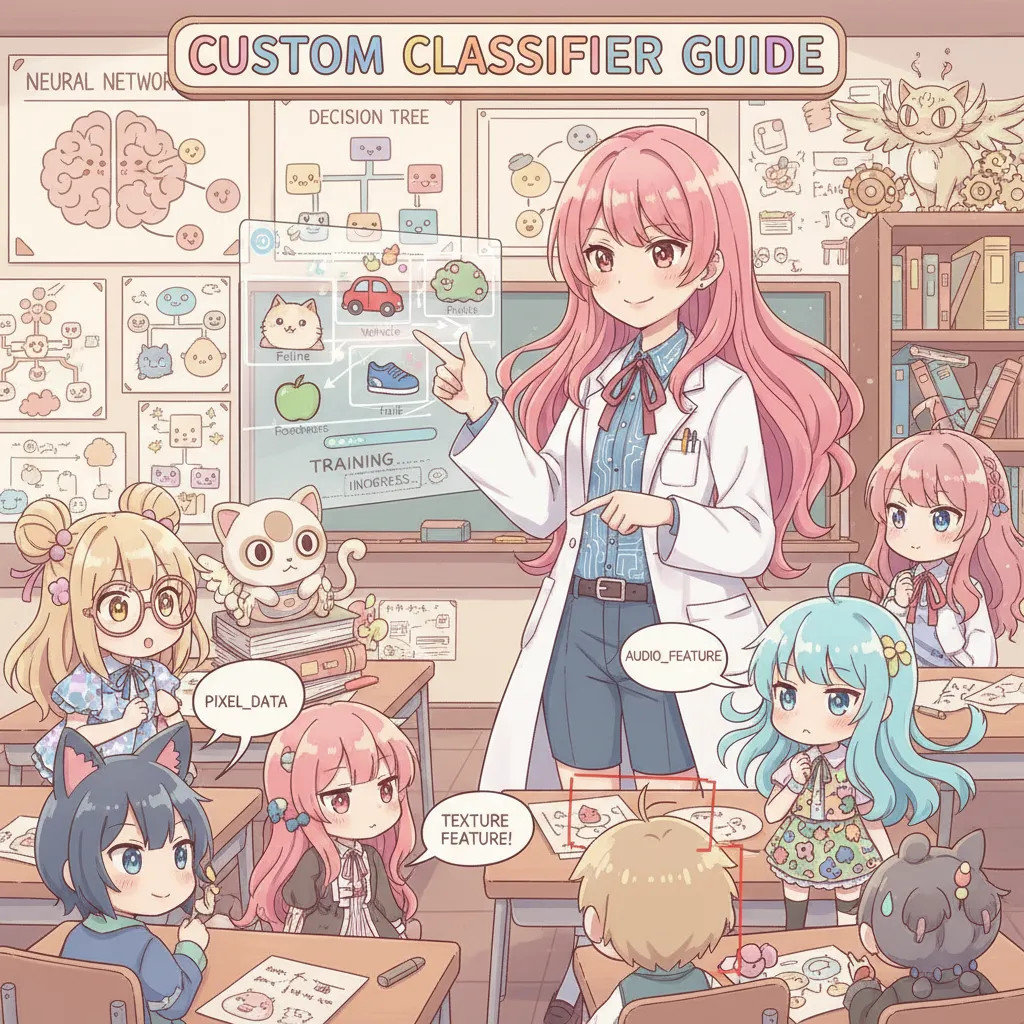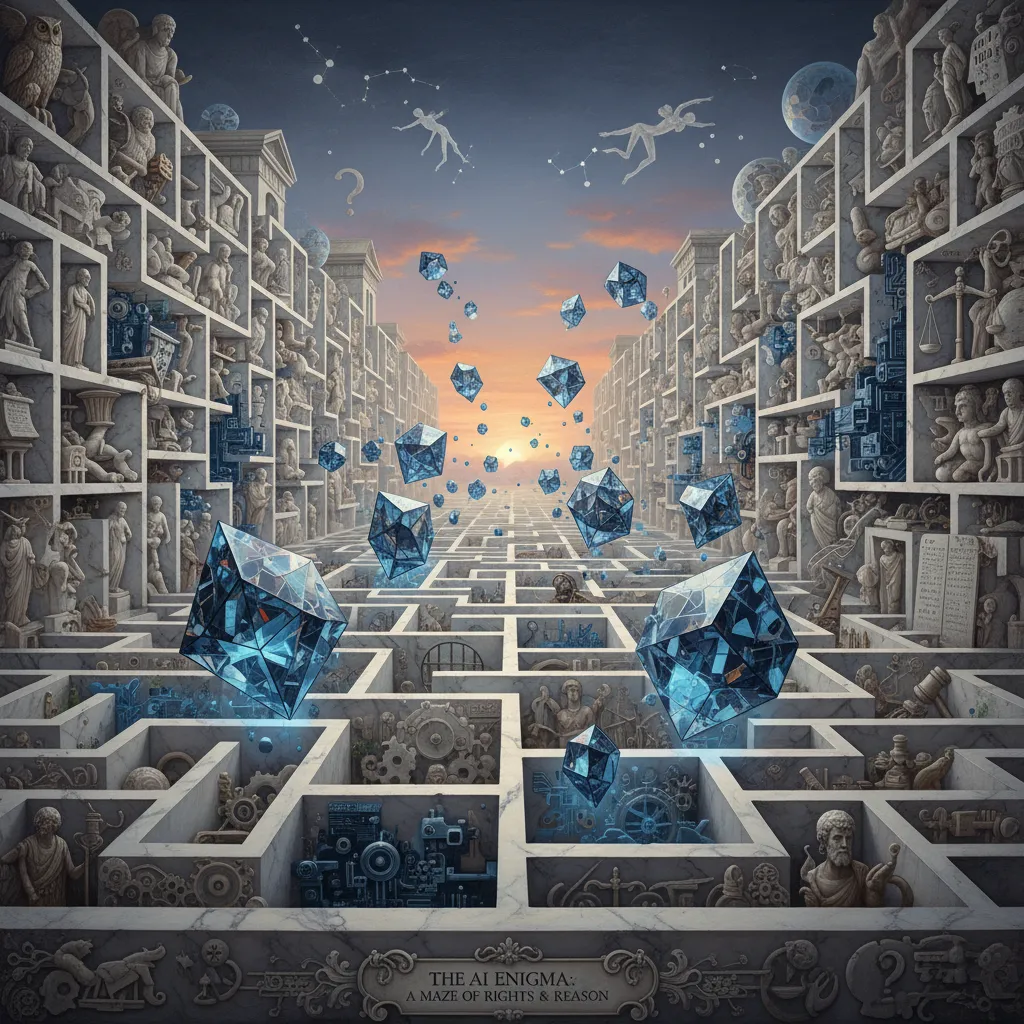We all remember the first time we tried to wrap our heads around something as big as Artificial Intelligence. For me, it happened late at night, mug in hand, wrestling with a Python script that stubbornly predicted the weather for the last week instead of the future! This confusion, mixed with a dash of excitement, is exactly why we’ve started this blog. We're here to make sense of the AI universe, demystify the jargon, and create a home for anyone—especially new and seasoned developers alike—looking for practical, easy-to-digest guidance. Today, we hit the ground running with ‘What Is Artificial Intelligence? A Primer for Developers.’ Come along for the ride (err... glitches and all).
Finding Our Footing: Why Start a Human-Friendly AI Blog?
Welcome to our brand new blog—a space dedicated to making artificial intelligence (AI) approachable for everyone, especially developers who might feel like outsiders in the fast-moving world of machine learning. If you’ve ever felt that AI is a secret club, full of jargon and complicated math, you’re not alone. I’ve been there myself, staring at endless lines of code and dense academic papers, wondering if I’d ever catch up. That’s exactly why this blog exists: to break down those barriers and invite you in, no matter your background.
AI is everywhere these days. It’s in our phones, recommending what to watch next. It’s in healthcare, helping doctors spot diseases earlier. It’s even in the tools we use to write and code. But despite its growing presence, AI can still feel intimidating. Research shows that many people hesitate to dive into AI because they believe it requires advanced degrees or years of experience in mathematics and statistics. The truth? Curiosity and a willingness to experiment are often more important than a perfect academic background.
Let’s be honest: the world of AI can seem like it’s speaking a different language. There are so many acronyms—NLP, CNN, GANs—and so many frameworks, from TensorFlow to PyTorch. It’s easy to feel lost. I remember my first attempt at building a simple image classifier. I spent hours wrestling with Python errors, reading documentation, and second-guessing every step. It was humbling, sometimes frustrating, but also surprisingly fun. That experience showed me that learning AI isn’t about being perfect—it’s about being persistent and open to making mistakes.
That’s the spirit we want to bring to this blog. We’re here to share not just the polished success stories, but also the missteps and “aha!” moments that happen along the way. Our writing style will be simple, clear, and free of unnecessary jargon. Whether you’re a seasoned developer or someone just starting to explore AI, you’ll find content here that meets you where you are.
Why focus on developers, you might ask? Developers are the builders and problem-solvers who turn AI from theory into real-world solutions. Yet, as studies indicate, many developers feel left out of the conversation because AI resources often assume a level of expertise that not everyone has. We want to change that. Our goal is to create a bridge between the complex world of AI research and the practical needs of developers who want to build, experiment, and learn.
You don’t need to be a math genius to get started with AI. In fact, many successful AI practitioners began with little more than a basic understanding of Python and a drive to tinker. Platforms like DataCamp and Coursera offer beginner-friendly courses, and there are countless open-source projects you can explore. The key is to start small—maybe with a simple chatbot or a basic image recognition tool—and build your skills through hands-on practice. As you gain confidence, you’ll find it easier to tackle more advanced topics like deep learning or natural language processing.
Our first blog post, “What Is Artificial Intelligence? A Primer for Developers,” is designed to be your entry point. We’ll cover the basics—what AI is, how it’s being used today, and what you need to know to get started. No complex equations, no intimidating prerequisites. Just straightforward explanations and practical advice. As research shows, starting with the fundamentals and gradually building up your knowledge is the most effective way to learn AI.
Along the way, we’ll share stories from our own journey—both the successes and the stumbles. I’ve made plenty of mistakes while learning AI, from mislabeling data to misunderstanding how neural networks work. But each mistake was a learning opportunity, and I hope sharing these experiences will help you avoid some of the same pitfalls.
So, whether you’re here out of curiosity or because you want to build the next great AI-powered app, you’re in the right place. We’re excited to have you with us as we explore the world of artificial intelligence together—one step, one project, and one honest conversation at a time.
Crash Course: What Is Artificial Intelligence, Really?
At its core, Artificial Intelligence (AI) is about teaching computers to act smart. That’s it. Imagine a world where your car drives itself through city traffic, your phone recognizes your voice, or Netflix knows exactly what you want to watch next. All of these are examples of AI in action. The magic behind these features isn’t magic at all—it’s the result of years of research, clever programming, and lots of data.
But what does it mean for a computer to “act smart”? In simple terms, it means a machine can perform tasks that would normally require human intelligence. These tasks might include recognizing faces in photos, understanding spoken language, or even playing chess at a world-champion level. The key is that the computer isn’t just following a fixed set of instructions—it’s making decisions, learning from data, and sometimes even surprising its creators.
Different Flavors of AI: Not All Intelligence Is the Same
AI isn’t just one thing. In fact, there are several “flavors” or types of AI, each with its own strengths and weaknesses. Let’s look at the three main categories you’ll hear about most often:
Rule-Based AI: This is the classic approach. Developers write a set of rules, and the computer follows them. Think of a simple chatbot that answers questions based on a script. It’s predictable but limited—if you ask something outside the rules, it gets confused.
Machine Learning (ML): Here’s where things get interesting. Instead of hard-coding every rule, we give the computer lots of examples and let it figure out patterns on its own. For instance, if you show a machine learning model thousands of photos labeled “cat” or “dog,” it can learn to tell the difference. Research shows that this approach powers many of today’s most impressive AI applications, from spam filters to recommendation engines.
Deep Learning: This is a special kind of machine learning inspired by the human brain. Deep learning uses “neural networks” with many layers to tackle really complex problems, like recognizing faces or translating languages. It’s what makes voice assistants like Siri and Alexa possible. As studies indicate, deep learning has driven much of the recent progress in AI, especially in areas like image and speech recognition.
Learning the Hard Way: Why Data Matters
Let me share a quick story from my own journey into AI. My very first AI project was a simple image classifier. The goal? Teach a computer to tell the difference between dogs and bananas. Sounds easy, right? Well, not quite. I fed the model a bunch of photos—some of dogs, some of bananas—and hit “train.” The results were… hilarious. Every single dog was labeled as a banana. Why? Because I hadn’t given it enough variety in the training data. The lesson was clear: AI is only as good as the data you feed it.
This is a common theme in AI development. Whether you’re building a recommendation system or a self-driving car, the quality and diversity of your training data can make or break your project. As the saying goes, “Garbage in, garbage out.” That’s why, as a developer, it’s crucial to pay attention to the data you use and the assumptions you make.
AI in the Real World: More Than Just Hype
AI isn’t just a buzzword—it’s already changing the way we live and work. From healthcare to entertainment, AI is helping doctors spot diseases earlier, powering personalized playlists, and even making social media feeds more relevant. According to recent trends, the focus is shifting toward practical applications that solve real problems, not just flashy demos.
If you’re a developer looking to get started, the path is clearer than ever. Start with Python, brush up on your math and statistics, and try building a few hands-on projects. Platforms like DataCamp and Coursera offer beginner-friendly courses that walk you through the basics. As you gain experience, you’ll discover just how much is possible—and how much there still is to learn.
The Developer’s Roadmap: First Steps & Favorite Pitfalls
With the launch of our website, we’re setting out to demystify artificial intelligence. There’s a lot of hype and, let’s be honest, a fair bit of confusion out there. AI is everywhere these days, from healthcare and entertainment to social media and even the apps we use to order coffee. But what does it actually take to get started as a developer in this field? That’s the question we’ll tackle in our first blog: “What Is Artificial Intelligence? A Primer for Developers.”
Let’s be real—if you’re just starting out, the world of AI can feel overwhelming. There are so many buzzwords: deep learning, neural networks, reinforcement learning, and the list goes on. It’s easy to get caught up in the jargon and lose sight of what matters most at the beginning. Here’s my honest advice, based on both research and personal experience: don’t stress over the buzzwords. Instead, focus on the basics. And when I say basics, I mean learning to code, preferably in Python.
Python has become the go-to language for AI development, and for good reason. It’s simple, readable, and has a massive ecosystem of libraries that make building AI models much easier. Research shows that mastering Python is one of the most important steps for anyone looking to break into AI. Don’t worry if you’re not a coding wizard yet. Start small. Write simple scripts. Play around with data. The key is to get comfortable with the language before diving into more advanced topics.
Once you’ve got a handle on Python, the next step is to build simple AI projects. And here’s where things get interesting—and, honestly, a little bit fun. Your first projects probably won’t work perfectly. In fact, they might fail in ways you never expected. Maybe your image classifier thinks every cat is a dog, or your chatbot can’t hold a conversation for more than two lines. That’s normal. In fact, it’s part of the learning process. Studies indicate that hands-on projects, even the ones that go hilariously wrong, are some of the best ways to truly understand AI concepts. Each failure is a lesson in disguise, and sometimes the mistakes are more memorable than the successes.
When I started out, I remember spending hours trying to get a simple neural network to recognize handwritten digits. The results were… let’s just say, not impressive. But every bug I fixed and every weird output I got taught me something new. That’s the beauty of learning by doing. You don’t need to build the next breakthrough AI system on your first try. Just focus on experimenting, making mistakes, and learning as you go.
Of course, you don’t have to do it all alone. There are fantastic resources out there designed to guide self-learners through the AI maze. Platforms like DataCamp and Coursera offer structured courses that walk you through everything from Python basics to advanced machine learning techniques. These platforms can light the way, especially if you’re not sure where to start or how to structure your learning. According to recent trends, more developers are turning to these online resources to stay updated and build practical skills at their own pace.
As we move forward with this blog, I’ll be sharing not just tutorials and explanations, but also stories from my own journey—failures, surprises, and the occasional breakthrough. The field of AI is evolving rapidly, and 2025 is shaping up to be a year of even more practical applications and innovation. My hope is that this blog becomes a place where you can learn, experiment, and maybe even laugh at the occasional AI mishap along the way.
So, here’s to new beginnings! Whether you’re here to build the next big thing or just to satisfy your curiosity, I’m glad you’ve joined us. Let’s take these first steps together, avoid a few favorite pitfalls, and see just how far we can go with AI.



